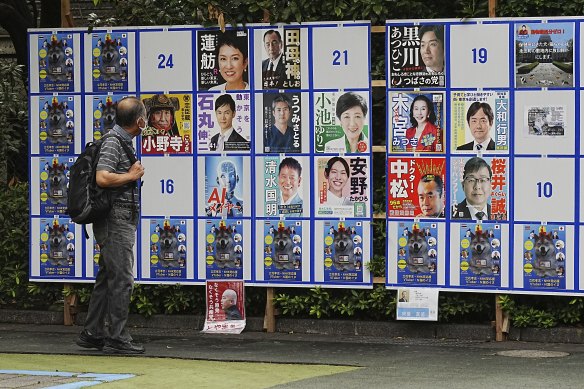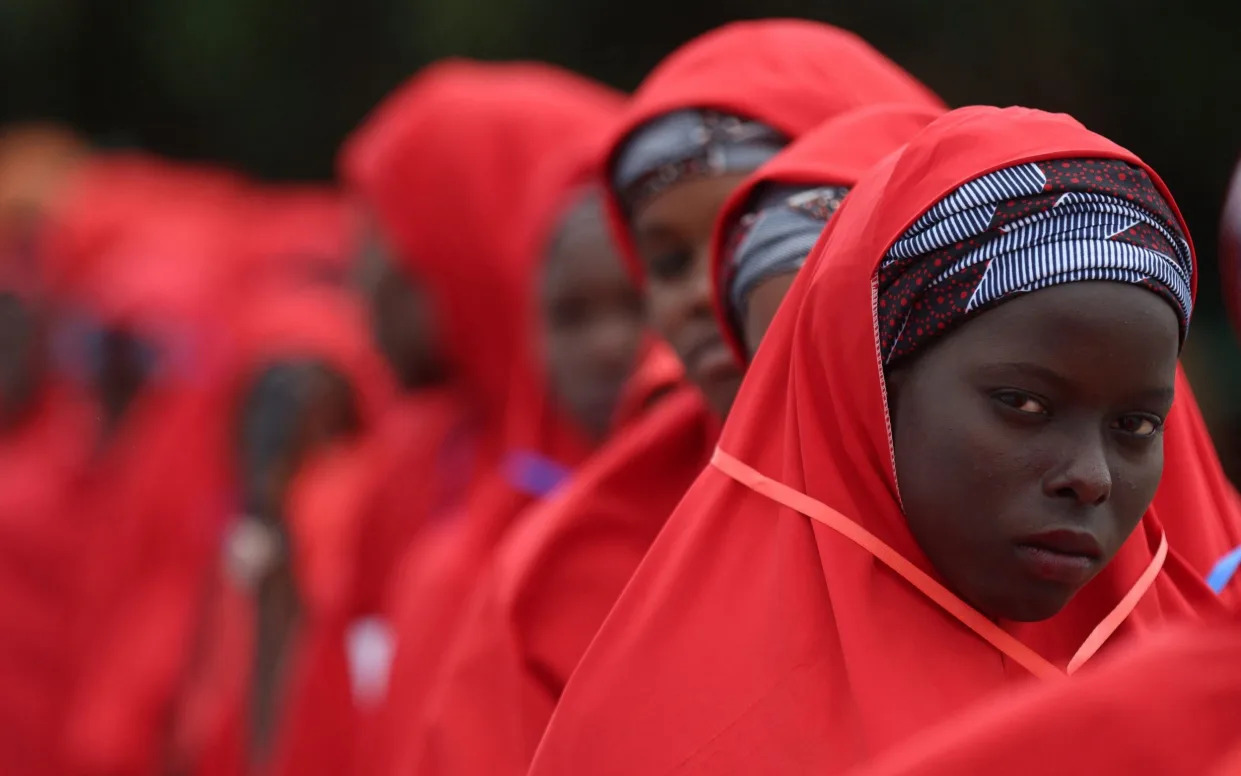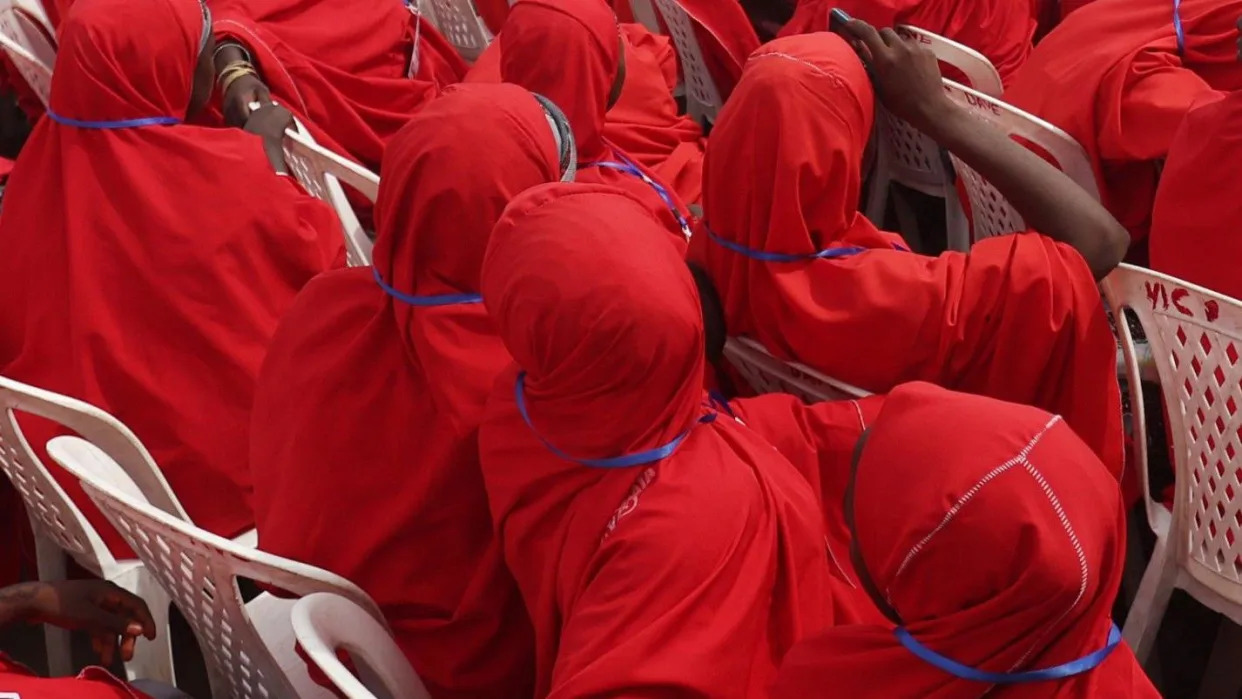The challenge to the Catholic Church in Europe’s Reformation also stirred up a wave of social revolt by peasants and the urban poor. The Anabaptist movement became a channel for this revolt before it was savagely repressed by a fearful ruling class.

Copper engraving of Anabaptist leader Jan van Leiden of Münster, Germany, beheading a nonbeliever at a banquet, 1534. (Ullstein bild via Getty Images)
JACOBIN
07.12.2024
In 1525, the revolt historians refer to as the German Peasants’ War was defeated. Hundreds of thousands of peasants and other members of the “common people” had risen up against German princes and bishops. Inspired, in part, by the Reformation that had begun a few years earlier, these rebels moved far beyond this starting point, demanding the democratization of their communities, an end to oppression and unjust taxes, and a restoration of common lands and property.
Some figures, like Thomas Müntzer, went further than simply posing demands to reform society and the church by raising ideas about how society could be remade in a truly radical way. They preached an end to the corrupt and exploitative rule of the princes and nobles, arguing that people could live communally, sharing resources and wealth among the commons.
The peasant uprising threw the members of the German ruling class onto the back foot, but they quickly recovered. Fearing revolution from below, they drowned the rising in blood. Tens of thousands of peasants were massacred. In the aftermath, anyone who had taken part in the rebellion — or had even shown sympathy for it — was at risk of imprisonment, torture, and execution.
The scale of this repression ended the revolt. But it could not stop the underlying discontent. After all, the conditions that had provoked rebellion remained unchanged. Nor did the repression put an end to the radical ideas that had developed within Reformation thinking.
The Radical Reformation
While figures like Martin Luther had unleashed the Reformation against a corrupt Church, the outbreak of the rising forced Luther and his fellow thinkers to side with the established order. However, there were other dissenters who, having been initially inspired by Luther’s ideas, took a different stand. Those radicals who survived the Peasants’ War began to look for other avenues to express their discontent.Those radicals who survived the German Peasants’ War began to look for other avenues to express their discontent.
This was the context for the final act of the “Radical Reformation” in Europe: the rise and fall of the Anabaptist movement. Today, we mostly know the Anabaptists as small religious groups such as the Mennonites, the Amish, or the Hutterites. Their origins lie in the religious turmoil of the early Reformation era, and their ideas were shaped through a radical reading of the Bible.
In particular, two passages of the New Testament were important because they pointed to a different way of Christian living. The fifth book of the New Testament, the Acts of the Apostles, describes the founding of the Christian church and the lives of Jesus’s earliest followers. These Christians were supposed to have lived communally, selling their possessions and sharing the wealth with the poor and needy, and among the Christian community itself.
Poor and radical thinkers were further inspired by the words of Acts 4:32-35:
Now the whole group of those who believed were of one heart and soul, and no one claimed private ownership of any possessions, but everything they owned was held in common. . . . There was not a needy person among them, for as many as owned lands or houses sold them and brought the proceeds of what was sold. They laid it at the apostles’ feet, and it was distributed to each as any had need.
For those living under heavy taxation, forced to hand over money in rent, taxes, and tithes to their lord and the church, these were inspirational words that spoke of a different way of living. Indeed, during the Peasants’ War, the establishment of “Godly Law” was a key demand for the rebels. In the aftermath of the rebellion, small groups of Christians continued to hold these principles dear.
One of the groups that began to emerge in the years after 1525 were the Anabaptists. There was no single Anabaptist interpretation of the Bible. Historians of the movement have identified five or six different strands of Anabaptism at various places in Germany and Switzerland. They had shared commitments to ideas such as “community of goods” as well as a rejection of infant baptism.
The idea of rebaptism, or baptism as an adult, became crucial to the Anabaptists because they thought that individuals had to come to the Church through their own belief. You could not be forced to join the Church as a child, simply by being baptized. This was shocking to the Catholic Church, which had long held that rebaptism was blasphemous, and punishable by death. At the same time, however, the Protestant movement also rejected the Anabaptists whose radical beliefs, they felt, would lead to further rebellion and bloodshed.Heavy repression forced the Anabaptists to organize clandestinely, spreading their message by traveling preachers, often secretly and predominately among the poor and oppressed.
The fear of Anabaptist radicalism on the part of the authorities had a real basis. Many of the movement’s leaders had been key figures in the Peasants’ War. Persecution of the Anabaptists drove thousands into exile, where these refugees spread their message and their belief that they were the elect — the one true group of Christians. In particular, they secured a foothold in the northwest of Europe.
Anabaptism threw up many fascinating characters, whose radical Christian ideas became a source of inspiration to tens of thousands of people. One of the most significant was Melchior Hoffman, who became closely associated with a form of radical millenarianism in the city of Strasbourg during the early 1530s. It was in the northwest of Germany that Anabaptism began to take on its most radical character.
Authorities in this Imperial City seem to have been more lenient in their handling of the Anabaptists, allowing the first preachers who arrived to carry on with relatively little restriction. But it was Hoffman who was able to turn Anabaptism into a radical force.Anabaptism threw up many fascinating characters, whose radical Christian ideas became a source of inspiration to tens of thousands of people.
He was a traveling artisan, a skinner, who had taught himself the Bible. He arrived in Strasbourg in 1529 and joined the Anabaptists, quickly becoming regarded as a prophet. Hoffman then traveled into the Netherlands where he helped spread Anabaptism, but eventually returned to Strasbourg.
Hoffman broke with the prevailing Anabaptist doctrines of nonviolence. He began to preach that the elect should take up the “two-edged sword” and use it against unbelievers. Hoffman’s influence was significant, albeit localized to Strasbourg, the Netherlands, and (significantly) Münster.
He told his followers that Strasbourg would become the New Jerusalem and would soon see the coming of the Lord who would introduce the “reign of the saints.” In the face of this wildly popular millenarianism, the Strasbourg authorities arrested him.
When it became clear that the saints were not coming to Strasbourg, attention shifted among Hoffman’s followers to the town of Münster, which had also seen a growth in the radical Reformation movement. Strasbourg, they felt, had failed God. Perhaps Münster would be different.
City of God
In the 1530s, Münster was part of the Prince-Bishopric of Münster, one of three run by Bishop Franz von Waldeck. In 1533, however, the city won significant reforms and privileges that gave substantial power to its elected council. In 1534, Anabaptist followers of Hoffman were able to use this setup to get control of the town, whose population was swelled by the arrival of thousands of Anabaptists, preparing for the “rule of the saints” that they believed would begin in Münster.
When the Anabaptists arrived in Münster, they joined existing religious radicals who had been inspired by a local priest called Bernhard Rothmann. Rothmann had long been a troublesome advocate of radical reform. He was quickly joined by Anabaptists inspired by Hoffman. Two of the most important were Jan van Leiden and Jan Matthys, who were to become leading figures in the Münster rebellion.When the Anabaptists arrived in Münster, they joined existing religious radicals who had been inspired by a local priest called Bernhard Rothmann.
While Anabaptism in Münster was very much the religion of the poorest communities, it also had its wealthier supporters who felt that the Lutheran Reformation had not gone far enough. Among these was the powerful figure Bernhard Knipperdolling, the head of the town’s guilds. Knipperdolling had been powerful enough a few years before to lead a challenge to the bishop, and he was clearly not afraid of challenging authority over religious issues.
Anabaptists soon outnumbered non-Anabaptists in Münster. Under the influence of people like Jan van Leiden and Matthys, the movement rapidly moved away from pacifism and nonviolence. Having taken control of the council, Jan van Leiden and Matthys set about constructing a theocratic state.
Left to his own devices, Matthys would have executed all non-Anabaptists, Catholic and Protestant alike. But at the urging of less extreme figures, they were expelled instead. The expulsion was akin to a pogrom. Thousands of people — old and young, healthy and unwell — were expelled in a snowstorm. They left behind their wealth and possessions, while those that stayed were rebaptized in a three-day ceremony.
These events precipitated the authorities into action. The bishop raised an army and placed Münster under siege.
A Siege Economy
The rule of the Anabaptist leaders was highly repressive, but it rested on the support of the thousands of Anabaptists, whose participation in mass religious events and communal action helped legitimize and strengthen the leadership. As the siege developed, the town instituted a war economy. Everyone, male and female, young and old, was given a role in the town’s defense.The Anabaptists instituted a communal order that redistributed the possessions and food that had been left behind.
The Anabaptists instituted a communal order that redistributed the possessions and food that had been left behind and central stores were created where the poor and needy could apply for the things they needed, from bedding to clothing. Communal dining areas were created where people ate together while listening to readings from the Bible. It is worth quoting eyewitness Heinrich Gresbeck’s account:
So the prophets and preachers, along with the whole council, took counsel and wished to have all property in common. They first issued a proclamation that all those who had copper money should bring it up to the council hall. A different kind of money would be given to them in return. . . . Next, they came to an agreement and decreed that all property should be common, that everyone should bring up his money, silver and gold, just as each had done the last time.
After the prophets and preachers reached this agreement with the council, they had it announced in the preaching that all property should be common and that one person should have as much as the next. Whether they’d been rich or poor, they should all be equally rich, the one having as much as the next. So they said in the preaching, “Dear brothers and sisters, now that we’re a single folk, brothers and sisters, it’s absolutely God’s will that we should bring together our money, silver and gold. The one person is to have as much as the next. So everyone should bring his money up to the registry next to the council hall. The council will sit there and receive the money.”
The preacher [Rothmann] continued, “It’s not appropriate for a Christian to have any money. Be it silver or gold, it’s unclean for a Christian. Everything that the Christian brothers and sisters have belongs to one person as much as to the next. You shall lack nothing, be it food or clothing, house and hearth. What you need you shall get, God will not let you lack anything. One thing should be just as common as the next, it belongs to us all. It’s mine as much as yours, and yours as much as mine.”
This is how they convinced the people, so that they (some of them) brought their money, silver and gold, and all that they had. But in the city of Münster, the idea that the one person was to have as much as the next turned out unfairly.
There is no doubt that these policies were highly popular among the poor. One contemporary scholar from Antwerp wrote to the Dutch theologian and humanist Erasmus bemoaning this sentiment:
We in these parts are living in wretched anxiety because of the way the revolt of the Anabaptists has flared up. For it really did spring up like fire. There is, I think, scarcely a village or town where the torch is not glowing in secret. They preach community of goods, with the result that all those who have nothing come flocking.
Outside Münster, the repression that the Anabaptists had experienced in their earliest days was repeated on a massive scale, with authorities trying to prevent people getting to Münster to support the besieged town.
Reform and Repression
The commitment of the Münster Anabaptists to the “community of goods” should not blind us to the repressive measures of the theocratic state. Books other than the Bible were banned and burned in a fire that Gresbeck says lasted for eight days, along with charters and documents from the authorities. Churches and monasteries were desecrated and destroyed. Five or six schools were opened, but they only taught religious subjects.
The siege was long and violent. A turning point took place in April 1534 when Matthys had a vision that he would defeat the enemy with just twelve followers. He bravely rode out of Münster with his followers but was immediately killed. This left Jan van Leiden as the most powerful figure in the town. He set about concentrating even more wealth and power in his own hands, declaring himself king and deepening the theological state.The commitment of the Münster Anabaptists to the ‘community of goods’ should not blind us to the repressive measures of the theocratic state.
One endlessly discussed aspect of the siege of Münster is the question of polygamy. Originally, the Anabaptists had only allowed marriage between two Anabaptists. Marriage between an Anabaptist and a nonbeliever, as well as adultery, were punishable by death. Jan van Leiden, however, instituted “polygamy.”
In his account of these events, Gresbeck writes:
Jan van Leiden with his bishop, preachers, and the twelve elders proclaimed the matrimony, saying that it was God’s will that they should increase the world, that everyone should have three or four wives, as many of them as he wanted, but they were to live with the wives in a godly way, as you’ll eventually hear. This pleased the one and not the other. There were men and women opposed to this, so that they wouldn’t uphold the matrimony, and for this reason many a person would eventually have to die.
Jan van Leiden’s justification for instituting polygamy rested on the Old Testament wherein figures such as Noah had more than one wife, combined with the biblical incitement to “go forth and multiply.” He himself took fifteen or sixteen wives.
After the siege, enemies of the Anabaptists used the issue of polygamy to attack them, arguing that it demonstrated the lack of morals among the community. This was surely the grossest hypocrisy, coming from people who cheered on the suppression, torture, and mass slaughter of the Anabaptists. But we should not see Münster’s practice of polygamy as being about sexual liberation in any form.
Some historians have noted that there was a significant imbalance between the number of women and men in the city. While this is true, attempts to justify Jan van Leiden’s polygamy as being intended to assist the protection of women miss the mark. The arrangement in question was not really polygamy, a term which suggests that women could take multiple husbands, but rather polygyny, in which men alone enjoyed the privilege of multiple partners. This point is underlined by the declaration of the Münster Anabaptist authorities:
All womenfolk, virgins, maidens, and widows, all those who are marriageable, whether they be noble or non-noble, spiritual or secular, they should all take husbands, and the wives who have husbands outside the city who’ve fled from us should also take other husbands, since their husbands are godless and have fled from the Word of God and aren’t our brothers. Dear brothers and sisters, for so long did you live in heathendom in your marriage, and it was not a real marriage.
Women were forced into marriage under these circumstances. While it seems that some got married willingly, most did not. This caused great discontent, even leading to a small uprising that was quickly crushed.
Gresbeck suggests that at least one woman may have committed suicide rather than submit. Others who refused or opposed the practice of forced marriage were executed. The discontent seems to have been large enough that the leadership retreated. According to Gresbeck, they declared “marriage should be voluntary,” but the move came too late.
New Israel
As the siege drew on and life became increasingly desperate, power and wealth were centralized in the hands of Jan van Leiden, who declared himself “king over New Israel and the whole world,” second only to God in his power: “In the whole world, there would be no king or lord but Jan van Leiden, and in the whole world there would be no government but Jan van Leiden.”
Food was so scarce that inhabitants ate cats, dogs, and rats. At the same time, Jan van Leiden surrounded himself with vast wealth, living a life of luxury in requisitioned mansions with his multiple wives, a huge retinue, and special guards. The new “king” took on all the trappings of medieval monarchy, sitting in judgement on a special throne in the marketplace. More and more goods were confiscated to fund this lavish lifestyle while the population increasingly suffered.
Outside the town, opposition to the Anabaptists was growing. The bishop had raised enough money from other rulers to hire a bigger army. Preachers heading out from Münster were still able to inspire people to try and join, and there was at least one attempt by a thousand Anabaptists from the Netherlands to relieve Münster. However, this effort was violently crushed before they could arrive.As the siege drew on and life became increasingly desperate, power and wealth were centralized in the hands of Jan van Leiden.
In May, Jan van Leiden responded to the desperation by allowing many people to leave the town. Tragically, the younger men were promptly killed by the besiegers who refused to allow the others to go beyond the outskirts of the city. The women, elderly people, and children were left to suffer, trapped between the town walls and the besieging armies. For five weeks, hundreds of them starved and died, eating grass and unable to escape. Eventually, the bishop relented. Those considered Anabaptists were executed, while the remainder were banished.
Münster eventually fell after Gresbeck and another man escaped, providing the besiegers with enough information to allow them to get inside. The bishop’s forces then set about massacring those who remained. Hundreds were killed in the fighting or tortured and executed afterward. In January 1536, Jan van Leiden, Knipperdolling, and another leading Anabaptist, Bernhard Krechting, were tortured to death publicly in the center of Münster. Their bodies were caged and hung from the tower of St Lambert’s Church in cages whose replicas still remain there today.
The storming of Anabaptist Münster, and the mass murder and execution of those who remained inside, was the end of the mass, radical Reformation. Anabaptism never regained its strength. After 1535, there were no more attempts to construct a “community of goods” within existing society through movements from below.
Sighs of the Oppressed
By destroying the peasant revolution in 1525, the German authorities had left only one outlet for discontent: religion. Their bloody destruction of Münster Anabaptism was an attempt to shut that avenue down as well. The Reformation in Europe lost its mass nature and became in many places a top-down process driven by kings and nobles.
Some accounts of Münster — notably that of the leftist Belfort Bax, whose history of the events was published in 1903 — have tried to establish close parallels with later working-class revolutions. The historian Norman Cohn also drew a comparison between Jan van Leiden’s followers and twentieth-century revolutionary movements in his book The Pursuit of the Millennium, although his intention in doing so was to discredit modern-day communism.
The fact that the Anabaptist leaders tried to implement the “community of goods” as the authorities responded with siege and massacre suggests an obvious parallel with the Paris Commune of 1871. However, while we should be sympathetic to those in Münster who genuinely sought to create an equal society, we cannot give the events too much of a radical coloring by reading later episodes of revolutionary history into this period.The storming of Anabaptist Münster, and the mass murder and execution of those who remained inside, was the end of the mass, radical Reformation.
It is true that many Anabaptists, coming from the mass of the poor in northwest Germany and the Netherlands, had high expectations that a millennial moment was coming, and hoped to benefit from the redistribution of wealth from the rich to the poor. But the way in which this vision was temporarily realized was very different from the experience of later movements that redistributed wealth through mass movements from below. The Paris Commune was distinguished by the practice of mass, participatory democracy, yet no such democracy or accountability existed in Münster.
Having said that, the destruction of Anabaptist Münster should remind us, above all, that ruling classes have always feared rebellion from below. One of the great demands of the radical Reformation was that ordinary women and men should be allowed to practice their religion as they wanted to, not filtered through the words of a priest chosen by the local lord.
In reading the Bible, they found words that were “the sigh of the oppressed creature,” in the words of Karl Marx’s (often misunderstood) analysis of religion. Thousands of them gave their lives trying to build a world where ordinary people could live life free and comfortably. This was too much for their rulers, who crushed them without scruple.
CONTRIBUTOR
Martin Empson is the author of several books including “Kill all the Gentlemen”: Class Struggle and Change in the English Countryside. He is currently working on a book about the German Peasant War of 1525.














